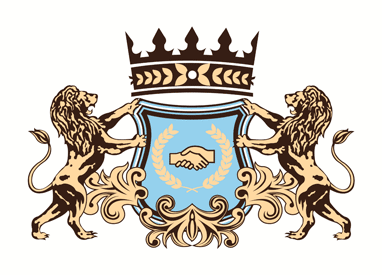Highland Copper Completes Phase 1 Engineering and Announces Positive Results from Trade-Off Studies at Its Copperwood Project
VANCOUVER, British Columbia, Oct. 15, 2025 (GLOBE NEWSWIRE) -- Highland Copper Company Inc. (TSXV: HI; OTCQB: HDRSF) (“Highland” or the “Company”) has successfully completed Phase 1 detailed engineering (“Phase 1”) for its 100%-owned Copperwood Project in Michigan, USA. Phase 1 represented a comprehensive re-evaluation of the project, and in key areas, confirmation of overall project design. The work has delivered meaningful improvements to both the process plant and mine, strengthening the overall project, improving its environmental footprint and advancing Copperwood toward Phase 2 detailed engineering (“Phase 2”). Phase 2 will advance engineering to approximately 35-40%, supporting a potential construction decision and technical due diligence for project financing in 2026. Phase 2 will also update capital and operating costs to reflect inflation and other changes since the Feasibility Study.
Phase 1 was overseen by Highland Copper’s internal engineering team under the leadership of Project Director, Dr. Wynand van Dyk. Dr. van Dyk has a PhD in Extractive Metallurgical Engineering and a 30-year career in metallurgical design, construction and operations. His addition in late 2024 significantly strengthened the Company’s technical capacity to advance Copperwood toward a construction decision. Engineering for the process plant and mine was carried out by DRA Americas Inc (“DRA”). Overall water balance engineering was completed by Foth Infrastructure & Environment, LLC (“Foth”) and Tailings Disposal Facility (“TDF”) engineering was completed by Tetra Tech.
Process Plant Redesign Highlights
As announced on September 4, 2025, based on the positive results from the 2025 metallurgical test work program, the process plant has been broadly redesigned.
- Higher Recoveries and Lower Costs:The redesigned circuit is expected to achieve 87.6% copper recovery at a concentrate grade of 25% copper, while also reducing operating costs through lower power and reagent consumption. Particularly, an optimized reagent scheme reduces processing costs by approximately $1.00 per tonne milled. This represents a clear improvement over the 2023 Feasibility Study from a recovery and cost perspective.
- More Efficient Comminution:The adoption of an MF2 circuit with a coarser primary grind, a de-sliming stage ahead of the secondary milling and optimized regrind using ISAMill technology, reduces power demand and operating costs while minimizing fine particle losses.
- Smaller, Smarter Flotation Plant:The integration of Jameson cell ultrafine flotation technology substantially reduced the overall flotation plant footprint and complexity, lowering capital costs and improving ESG performance.
- Operational Improvements:A larger ore storage silo, enhanced pump redundancy and the adoption of a Programmable Logic Controller/Supervisory Control and Data Acquisition (“PLC/SCADA”) control system will improve reliability and align with local expertise.
Collectively, these refinements increase copper recoveries, reduce costs, and de-risk execution while strengthening Copperwood’s environmental and operational profile.
Mine Engineering Highlights
Phase 1 mine engineering re-evaluated the mining method, mining equipment and underground ore handling with the goal of reducing technical risk and improving economics.
- Mining Method: While the 2023 Feasibility Study proposes room-and-pillar (R&P) mining, Phase 1 evaluated drift-and-fill (D&F) in high-grade zones of the ore body. It was identified that D&F could potentially increase mine recoveries from 69% to approximately 94%, extend mine life, and reduce the tailings footprint by using paste backfill. A hybrid approach of D&F in the west and R&P in the east may present an opportunity to improve the economic returns of the project, subject to successful paste test work early in Phase 2 engineering. If paste backfill is determined to be technically viable, Highland will consider other relative merits, including environmental and permitting implications, before considering changing from the R&P mining method for certain areas of the deposit. We are encouraged by the optionality D&F provides and will provide updates on this engineering during Phase 2.
- Mining Equipment:During the Phase 1 review, DRA reviewed the productivity assumptions regarding roadheader (continuous miner) utilization, particularly their maneuverability and cycle times. As part of an overall mine plan review early in Phase 2, we will continue to assess the technical and financial merits of roadheaders versus conventional drill-and-blast using jumbos.
- Underground Ore Handling:Trade-off studies confirmed conveyors as the preferred option over truck haulage, offering the lowest operating cost, minimal ventilation needs, and long-term scalability. The design also maintains flexibility to adopt battery electric vehicle technology in the future.
Tailings & Water Management Engineering Highlights
An integrated approach between DRA, Foth and Tetra Tech delivered a more efficient, lower risk plan for tailings deposition and water management.
- Thickened Tailings:The addition of a tailings thickener increases solids content to approximately 50% by mass, cutting tailings handling costs, reducing the scale of the tailings disposal facility (“TDF”) footprint, and providing for the immediate recycle of more than 80% of process water needs directly back to the plant. Additionally, the TDF will no longer be used for contact water storage, further reducing dam failure risk. Instead, contact water will be managed in a permanent rainwater retention dam, improving safety and aligning with global standards.
- Underground Tailings Disposal:Studies indicate that approximately 7.9 Mm³ of thickened tailings could potentially be stored underground, reducing the required surface TDF footprint by approximately 40%. This option will be further assessed in Phase 2 engineering, including environmental and permitting implications.
- Water Resilience: Updated water balance modeling confirmed robust water management across a range of climate scenarios, strengthening ESG performance.
Considerations in Phase 2 Engineering
Labor Costs:As the Copperwood Project advances toward Phase 2 engineering, an updated labor cost survey will be required to accurately reflect the costs and benefits necessary to attract and retain skilled technical personnel and experienced underground equipment operators in Michigan’s Upper Peninsula. Several outcomes of the Phase 1 trade-off studies, including mining method selection, equipment deployment, and ore handling strategies, are sensitive to labor costs. These costs will directly impact the overall unit mining cost and, by extension, the project’s operating cost structure. A refreshed labor cost baseline will ensure that Copperwood’s mine plan is both competitive and realistic, aligning workforce expectations with project requirements while supporting the long-term sustainability of operations in the region.
Integrated Mine Plan Review:The Company will update the Copperwood mine plan to incorporate a revised cut-off grade, integrating the results of the updated labor survey, potential modifications to the mining method and equipment strategy, and broader market inputs such as copper price movements and relevant cost indices. During Phase 2, an in-depth review of the ground support design and associated back height will be undertaken. Given the unique geotechnical conditions, the excavation method, back height, and ground support are highly interdependent and must be evaluated as an integrated system. This integrated systems approach will guide final decisions on mining method selection (including the potential adoption of D&F), ground support design, and the potential implementation of underground tailings disposal. The resulting mine plan will align updated technical solutions and economic assumptions, ensuring both operational efficiency and long-term project viability.
Project Considerations: To the extent any technical optimizations require permit amendments, the project schedule will be adjusted to appropriately reflect timing considerations. Permit amendments may be needed to reflect the optimized process plant design flow sheet, the addition of a tailings thickener, selection of power source to site, and potential mining method and tailings disposal changes. If permits are amended, we will also take the opportunity to resolve any minor discrepancies to project design. We are encouraged that permit amendments under consideration generally improve the environmental footprint of the project, as well as its technical and financial strength. The reduced scale of the process plant, incorporation of a tailings thickener, consideration of D&F mining method, as well as paste backfill of tailings, all demonstrate improved environmental, health and safety characteristics. We are also encouraged by our recent success in amending permits in a timely basis. If we elect to amend permits, the targeted construction decision of Q2 2026 will likely defer to the second half of 2026.
Qualified Person Statement
The technical information in this news release has been reviewed and approved by Dr. Wynand van Dyk, a qualified person as defined by National Instrument 43-101, Standards of Disclosure for Mineral Projects. Dr van Dyk is employed by Copperwood Resources Inc, a wholly owned subsidiary of Highland Copper, in the role as Project Director.
About Highland Copper Company
Highland Copper Company Inc. is a Canadian company focused on exploring and developing copper projects in the Upper Peninsula of Michigan, U.S.A. The Company owns the Copperwood deposit through long-term mineral leases and 34% of the White Pine North project through a joint venture with Kinterra Copper USA LLC. The Company also owns surface rights securing access to the Copperwood deposit and providing space for infrastructure at Copperwood as required. The Company has 736,363,619 common shares issued and outstanding. Its common shares are listed on the TSX Venture Exchange under the symbol "HI " and trade on the OTCQB Venture Market under symbol "HDRSF ".
More information about the Company is available on the Company’s website at www.highlandcopper.com and on SEDAR+ at www.sedarplus.com.
Cautionary Note Regarding Forward-Looking Information
This news release contains “forward-looking statements” and “forward-looking information” (collectively “forward-looking statements”) within the meaning of applicable Canadian securities legislation. These statements include, without limitation, statements with respect to: (a) Phase 1 engineering work, and the anticipated benefits thereof; including with respect to: (i) the process plant redesign; (ii) changes to mine engineering and potential changes to the mining method for Copperwood; (iii) improvements to tailings and water management; (b) the potential to advance to Phase 2 engineering work at Copperwood and the timing thereof; (c) potential updates to the Copperwood mine plan; (d) the impact on the project schedule if permitting amendments are required; and (e) the potential timing of a construction decision and project financing with respect to Copperwood. The forward-looking statements are subject to a number of assumptions, including those set out in the technical reports entitled “Feasibility Study Update Copperwood Project Michigan, USA” and the Company’s annual information form for the year ended June 30, 2024 (the “AIF”). These underlying assumptions may prove to be incorrect. Important factors that could materially impact the Company 's expectations include: changes in project parameters as plans continue to be refined; availability of services, materials and skilled labour to complete work programs, testing and drilling; effects of regulation by governmental agencies; the fact that permit extensions, renewals and amendments are subject to regulatory approvals, which may be conditioned, delayed or denied; there is no assurance that the grant funding we have applied for will be available, and any such approval may be subject to conditions; advancement to a construction decision at Copperwood is subject to additional studies, for which the Company will require additional funds, which may not be available on a timely basis and accordingly could delay a construction decision; the Company will be required to repay the loan facility from Kinterra in July, 2026, or will have its interest at White Pine diluted; unexpected cost increases, which could include significant increases in estimated capital and operating costs and the effects of inflation; fluctuations in metal prices and currency exchange rates; general market and industry conditions, the results of baseline studies and test work may result in unforeseen issues which could delay or hamper advancement of the projects, the results of drill programs may not result in identification or confirmation of resources, and the other risks set out in the Company’s public disclosure documents, including the AIF, filed on SEDARPlus. Although the Company believes that the assumptions and factors used in preparing the forward-looking statements in this news release are reasonable, undue reliance should not be placed on forward looking statements. All forward-looking statements in this press release are based on information available to the Company as of the date hereof, and the Company undertakes no obligation to update forward-looking statements except as required by law.
Neither the TSX Venture Exchange nor its Regulation Services Provider (as that term is defined in the policies of the TSX Venture Exchange) accepts responsibility for the adequacy or accuracy of this release.
For further information or media requests, please contact:
Barry O’Shea, CEO
Email: info@highlandcopper.com
Website: www.highlandcopper.com

© 2025 GlobeNewswire, Inc. All Rights Reserved.


















